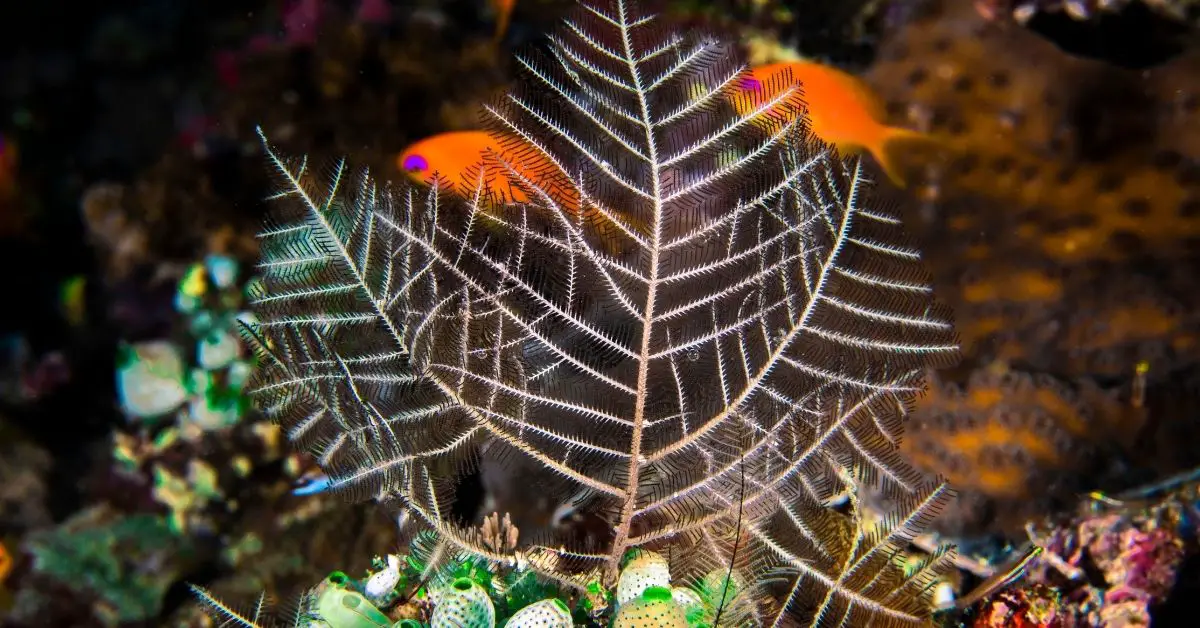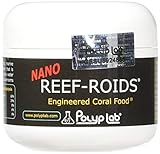While it’s rare in newer aquariums, hydroids can appear in any tank along your journey. That’s because hydroids are known as “hitchhikers,” finding their way into your tank via a number of possible entry methods.
If there are hydroids in a reef tank, you’re sure to want to know all about them, how they got there, whether or not they’re dangerous, and how to clear your tank of them. If those sound like questions you have, keep reading!
What are Hydroids?
It’s easy to confuse hydroids with any of the million things that could be in your tank because hydroids are a member of the hydrozoan family. All of these can look and act different, some more harmful and others harmless, so it’s important to know you’re dealing with hydroids.
The general appearance of a hydroid resembles a tiny spider or jellyfish, depending on the type. However, they can also look similar to a snowflake, tiny, fuzzy balls, or a small corn stalk with tentacles.
Instant Ocean Reef Crystals Reef Salt For 160 Gallons, Enriched Formulation For Aquariums
$66.79 (as of November 2, 2025 11:44 GMT +02:00 - More infoProduct prices and availability are accurate as of the date/time indicated and are subject to change. Any price and availability information displayed on [relevant Amazon Site(s), as applicable] at the time of purchase will apply to the purchase of this product.)Seachem Reef Glue Cyanoacrylate Gel Coral Frag Mounting, 20g (001167)
$9.99 (as of November 2, 2025 11:35 GMT +02:00 - More infoProduct prices and availability are accurate as of the date/time indicated and are subject to change. Any price and availability information displayed on [relevant Amazon Site(s), as applicable] at the time of purchase will apply to the purchase of this product.)Polyp Lab Nano Reef-Roids Coral Food - 37g
$15.99 ($208.00 / lb) (as of November 2, 2025 11:35 GMT +02:00 - More infoProduct prices and availability are accurate as of the date/time indicated and are subject to change. Any price and availability information displayed on [relevant Amazon Site(s), as applicable] at the time of purchase will apply to the purchase of this product.)Though small, the tentacles are full of nematocysts that sting similar to that of a jellyfish. Since they can be lethal to your tank, it’s important to identify hydroids. Because of the multiple appearances, though, it can be hard to tell if that’s what you’re dealing with.
How Do I Identify Them?
The best method to divine if hydroids are, in fact, in your tank is by feeding and watching the reaction of the tiny organisms. Most of the time, hydroids will gather along the walls of your reef tank.
When you drop the baby shrimp or zooplankton into the tank, look closely at the “hydroids.” If their tentacles seize the shrimp or plankton and begin to feed, they’re probably hydroids and you have a problem.
Even further evidence is if they change colors, as they start out white and can transition into another hue of the rainbow as they feed.
How Did They Get in My Tank?
Before you go kicking yourself, realize that hydroids are bound to get into any tank down the line. It’s just a matter of time because hydroids are so good at riding shotgun. While they can obviously be on something you bring from the beach, there are a lot of ways to get them.
Hydroids can hitch a ride on practically anything: Rocks, algae, sand, crab and snail shells, gravel, or any amount of seawater. They can even come in with live food, so there’s no way to avoid an infestation at some point.
They prefer to infest reef tanks with low water flow, which are usually populated with seahorses or smaller fish. Seeing as that’s what they can be lethal to, you definitely need to figure out what they are the second you notice anything out of the ordinary.
Not to mention the fact that they spread so quickly due to the fact that hydroids can reproduce asexually and sexually through fragmentation, there’s no way to prevent them from either getting onto something or entering your ecosystem.
Are They Dangerous?
Hydroids aren’t necessarily deadly, but they can be. The main threat that they pose is to fish and seahorse fry or dwarf seahorses. If your tank is populated with mostly grown seahorses, coral, or full-grown fish, you don’t need to worry and have time to clean them out.
However, if you’re breeding or your fish recently laid eggs you need to act. That’s because, again, hydroids spread quickly. They have multiple phases of growth, but they’re as dangerous in the “polyp” stage as they are in the “medusa” phase.
This is because it’s their sting that’s a threat and they can sting in both of those stages. One way to find out if they’re stinging hydroids or if they’re dangerous is to pay attention when you’re working in your tank.
If you feel them stinging your hand or fingers, they pose a threat. In case you wonder how they can be lethal, the sting itself can kill a fry or an egg but it can be just as deadly for dwarf fish or seahorses.
While the sting wouldn’t outright kill a small fish, it can handicap the victim and create a wound. This wound then gets infected and before long the fish or seahorse dies from bacteria that all started with the sting of a hydroid.
Make no mistake, not all are dangerous but the stinging hydroids need to be removed from your tank as soon as possible.
How Do I Get Rid of Them?
When it comes to hydroids, the best way to combat the issue is to prevent them from getting in your tank as much as you possibly can. Failing that, the drug Fenbendazole can be your best friend with a huge drawback.
Prevention
Knowing that the hydroids can hitchhike into your tank on anything, one of the most common ways that they do so is on the shells of the baby brine shrimp that you’re feeding your aquarium with.
Because of this, the 2 best weapons you have for preventing an infestation are to either buy decapsulated eggs or do it yourself. If you don’t want to pay the extra cost to have it done, it’s not that difficult to do at home.
- Sprinkle the shrimp eggs into an inch of water. This will re-hydrate the eggs and prepare their shells to be dissolved.
- Add an inch of bleach to the container or jar. Be careful not to just pour it in, stirring it into the water over time and letting it dilute.
- Once the shells have all dissolved, filter your eggs into a sieve or net small enough to catch them.
- Rinse your jar and fill it with fresh water. Pour a small amount of de-chlorinating solution into the water and mix it in.
- Add the eggs into the new jar of de-chlorinated water to rinse off the bleach.
Once you’ve followed those steps, you should have decapsulated brine shrimp eggs and successfully reduced the risk of hydroids making their way into your tank.
Remove Them
If the hydroids are in your tank and you’ve tried the other manual means of scraping them off, you have the option of using fenbendazole. This drug will kill hydroids with great success, but it will also kill any coral or many fish that you have in the tank.
Some species of marine life are usually safe, such as clownfish, snails, or dwarf seahorses, but you should still run it by an aquatic veterinarian before adding fenbendazole to the mix. However, you don’t just add it to the water supply.
You have to treat each individual living organism that will be in the tank with fenbendazole before adding them to the water. The drug will be absorbed into everything in the tank and permanently contaminate that water moving forward.
Especially because of that last part, fenbendazole shouldn’t be used without serious consideration. Unfortunately, despite many theories on forums, it’s the only consistently proven method of getting rid of hydroids.
References:
- Hydroid by Moss Landing Marine Laboratories https://www.mlml.calstate.edu/geooce/2016/12/12/hydriod/














